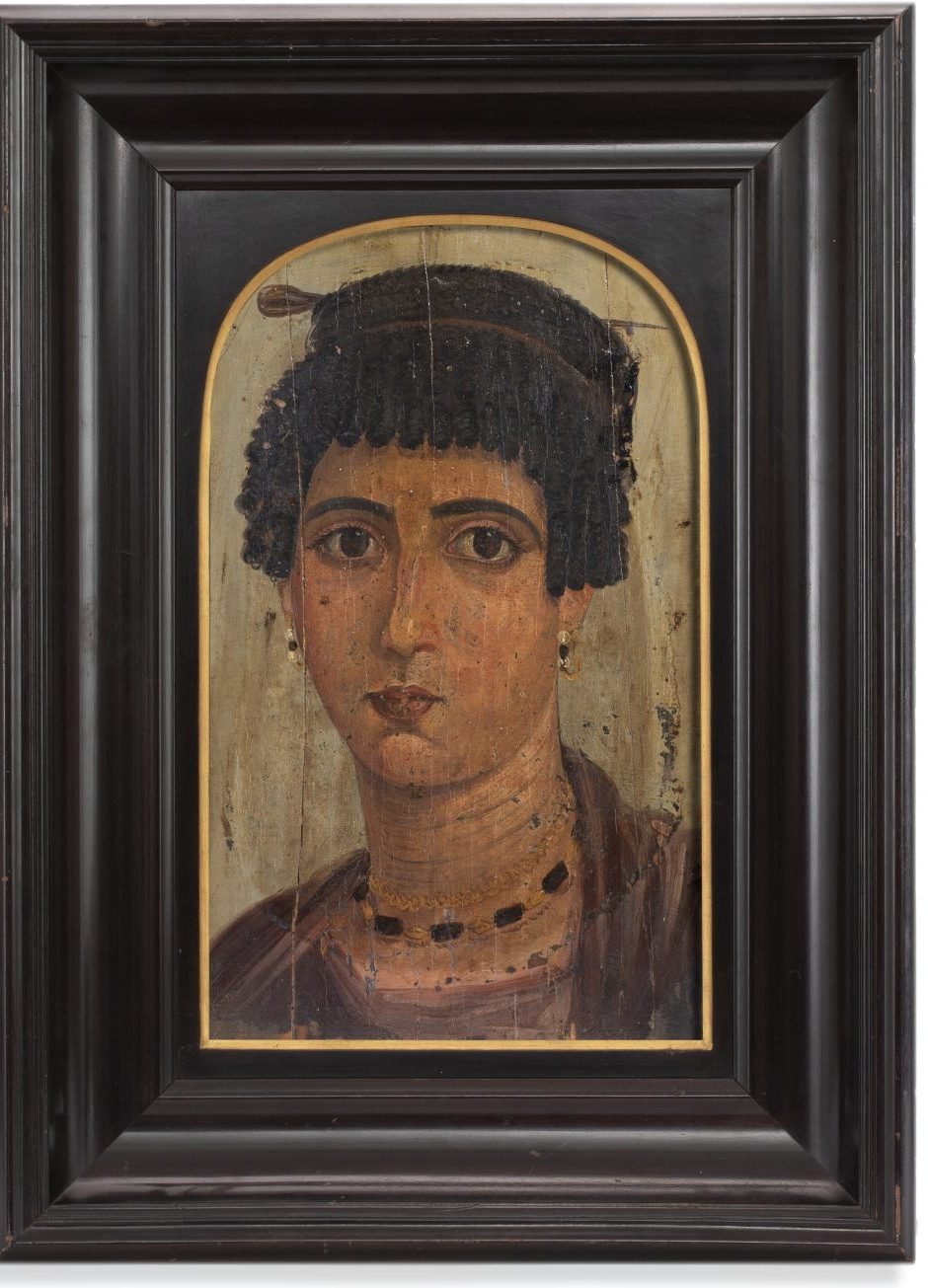
Barring the invention of a time machine, the Fayum portraits are the closest us 21st-century humans will ever get to standing face to face with people who walked this planet more than two millennia ago.
As their name suggests, these portraits were first discovered in the Fayum Basin, a desert oasis south of Cairo. Made between the 1st and 3rd centuries C.E., they marked the burials of men, women, and children from the upper echelons of Ptolemaic Egypt. Preserved by the region’s warm, dry climate, their realistic style indicates they served the same purpose as photographs do: to show the deceased as they appeared in life.
Close to 1,000 of these portraits have been found since British archaeologist and Egyptologist Flinders Petrie uncovered the first batch in 1888. This October, one of the most striking of these paintings—Portrait L—will be sold at Frieze Masters for a seven figure asking price, according to its current owner, the Chelsea-based gallery ArtAncient.
Modern scientific imaging by Cambridge University (Hamilton Kerr Institute at the Fitzwilliam Museum) revealed that the portrait is genuine and unrestored. Photo: ArtAncient.
Most of the people depicted in the Fayum portraits appear to have belonged to the Egyptian upper-class, and the woman of Portrait L—also called Portrait of a woman with pearl earrings and emerald necklace—is no exception. Her status is reflected not just in her makeup—her charcoal eyeliner and red-tinged lips—but also her clothing and jewelry, both of which are made from expensive materials imported from faraway lands.
She wears a lavender tunic colored with rose madder, a pigment made from the plant Rubia tinctorum. More expensive still is her purple mantle, a color which, in ancient times, could only be produced from the mucus of a particular mollusk native to Lebanese coast. Art historians suspect that her gold earrings and necklaces were made from melted-down aurei, a Roman currency. Her emerald gemstones likely hail from the Emerald Mountains on the Red Sea Coast; her sizeable pearls, from the Persian Gulf.
Portrait L, which measures 38 by 23.5 centimeters, has a long and complicated history. First discovered by Petrie in 1888, it was legally exported to London the same year with permission from the Egyptian Antiquities Service. In London, the painting passed into the hands of his benefactor, Henry Martyn Kennard. Kennard held on to the painting until his death in 1911, after which it fell into the possession of one of Pablo Picasso’s art dealers, Léonce Rosenberg.
Pioneering cubist dealer Léonce Rosenberg, a former owner of Portrait L, hung it alongside works by Picasso. Photo: ArtAncient.
Exhibited in galleries across Europe and the United States, Portrait L enchanted generations of artists and writers, including the Dutch painter Lawrence Alma-Tadema, who famously included it in the background of his 1895 painting Love’s Jewelled Fetter. The Fayum portraits in general are also rumored to have inspired The Picture of Dorian Gray, a novel by Oscar Wilde about a man whose soul becomes inexplicably linked to a painting.
The vast majority of the Fayum portraits were painted in encaustic, an ancient technique in which artists mixed their pigment with hot wax before applying them to the canvas in thick and heavily textured layers.
Encaustic paintings are notoriously durable, explaining why so many Fayum portraits have stood the test of time. Costas Paraskevaides, the director of ArtAncient who found Portrait L “languishing in a decorative arts auction in Switzerland in 2023,” per The Times, described this particular painting as being in “first-rate condition,” a justification for its hefty asking price.